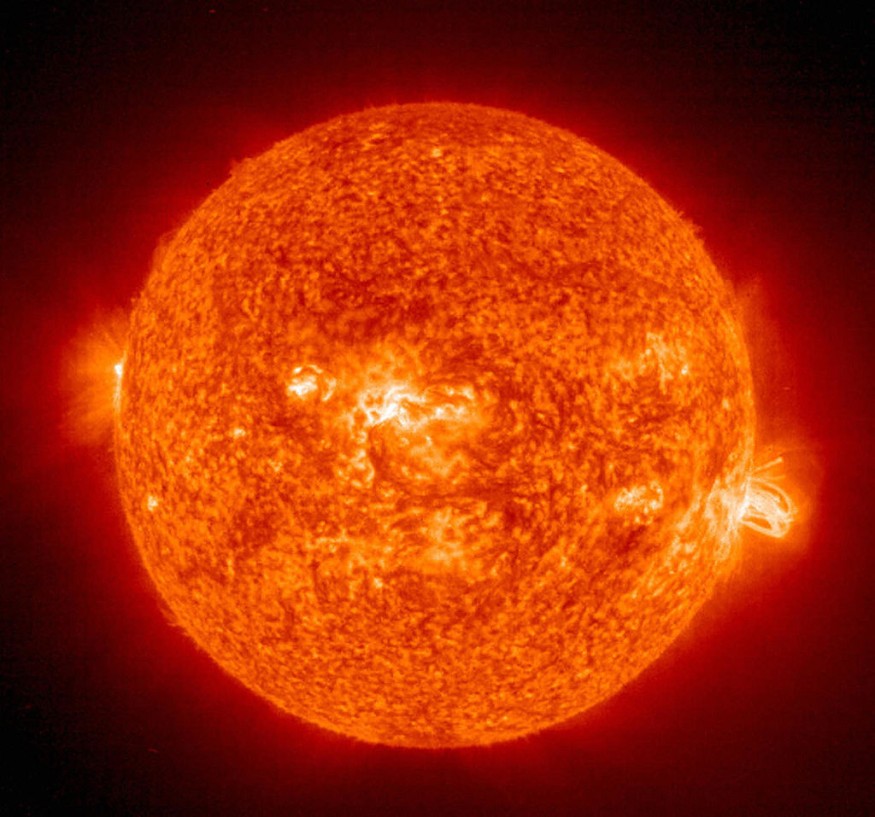The National Oceanic and Atmosphere Administration's Cooperative Institute for Meteorological Satellite Studies at the University of Wisconsin-Madison recently posted on Twitter two views of the Sun as it fired off a major solar flare.
The #GOES16 Solar Ultraviolet Imager (SUVI) instrument captured a strong solar flare today, seen here in 2 wavelengths. Pretty cool, er -hot! Get @NWSSWPC SUVI data at https://t.co/9Z6HTdJnof @NOAASatellitePA pic.twitter.com/QY4BSWHAHt
— UW-Madison CIMSS (@UWCIMSS) October 28, 2021
A CNET report said this outburst could "feed into some impressive aurora action on Earth." The science and tech news site also described the Sun as presently, in a zesty mood and an NOAA satellite was able to capture an excellent view.
The two views captured showed the flare bursting off as seen in different wavelengths. The Space Weather Prediction Center of NOAA recorded the flare as an X1. Essentially, flares are gauged in the same way as earthquakes, having the largest flares logged as X-class.
The smallest flares, on the other hand, are "A-class." Higher numbers signify stronger flares. In 2003, NASA once measured X28, although an X1 remains a major flare.

The Outburst
Solar flares, a similar The Paradise report said, can have an impact on this planet. Hazardous radiation from a flare cannot pass through the atmosphere to affect humans on the ground physically.
Nonetheless, according to a NASA statement, when strong enough, such flares can disrupt the atmosphere in the layer where communications and GPS signals transmit.
Furthermore, NASA released a view of the solar flare as seen by its Solar Dynamics Observatory. Tamitha Skov, a pace weather physicist, is tracking the flare and expecting the linked solar storm to reach Earth on October 31 in time for Halloween.
This occurrence could fuel some remarkable aurora action, as seen when what's described as "coronal mass ejection" reached Earth earlier this month.
It has been a busy month for the Sun, and its latest outburst could contribute to an additional celebratory element to Halloween as some sites of the globe may get to witness dancing, swirling auroral ghost lights in the sky.
Specifically, the North Dakota Dual Aurora Camera project will be closely and carefully watching the probable action this weekend. Such an occurrence could be a visual treat.
Sunspot and Solar Flare
NASA describes sunspots as the area appearing dark on the Sun's surface. They appear dark as they are cooler compared to other parts of the surface of the Sun.
On the other hand, solar flares are an abrupt explosion of energy resulting from crossing, tangling, or reordering magnetic field lines close to sunspots.
The Sun's surface is quite a busy site. It comprises electrically charged gases that yield areas of intense magnetic forces.
Such areas are also known as magnetic fields. The gases of the Sun are constantly moving, which is tangling, stretching, and twisting the magnetic fields. More so, the motion is creating a lot of activities on the surface of the Sun also known as solar activity.
Sometimes, the surface of the Sun is quite active. Other times, things are a bit more silent. The amount of solar activity is changing with the stages in the solar cycle. Solar activity can impact the planet that's why scientists are closely monitoring it every day.
Report about the most recent solar flare is shown on TheEarthMaster's YouTube video below:
RELATED ARTICLE : Solar System Estimated to Be Much Younger at 4.55 Billion Years Based on Magnetism Analysis
Check out more news and information on the Sun in Science Times.
© 2025 ScienceTimes.com All rights reserved. Do not reproduce without permission. The window to the world of Science Times.












